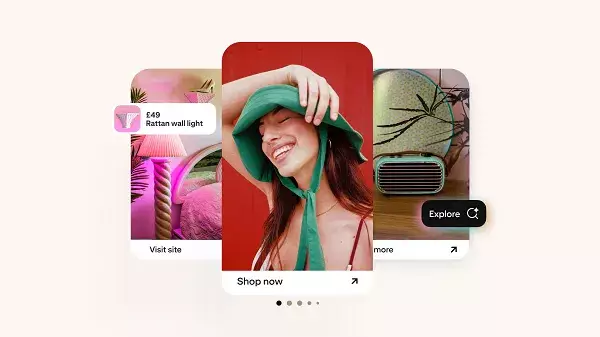In an age where digital engagement dictates consumer behavior, marketers are continually searching for innovative platforms to optimize their reach. Pinterest has emerged as a formidable player in this landscape, not merely as a social media network but as a visual search engine tailored for product discovery. With an impressive 570 million monthly users predominantly showing purchase intent, Pinterest presents a golden opportunity for brands looking to convert viewers into buyers. If you have yet to incorporate this unique platform into your social media marketing strategy, it’s time to reconsider.
What sets Pinterest apart is its inherent design as an online marketplace rather than a conventional social exchange. Users come equipped with a shopping mindset, making it essential for businesses to tap into this potential effectively. While the recent guide from Pinterest offers a comprehensive walkthrough of harnessing its business tools, this article will distill the key strategies needed to enhance your product visibility and sales.
Setting the Foundation: Product Catalog Integration
At the heart of any successful Pinterest strategy lies a well-curated product catalog. The initial step is straightforward: upload your product listings to Pinterest. Brands that have optimized their catalogs have experienced a staggering increase in engagement, with impressions soaring up to five times more compared to those with unoptimized feeds. This foundational element serves as the bridge connecting your merchandise to eager shoppers looking to discover new products.
Moreover, integrating your catalog is not a one-time effort. Ongoing maintenance and vigilance are crucial to ensure the health of your product feeds. Monitoring metadata, ensuring that each listing is packed with relevant keywords, appealing visuals, and compelling descriptions maximizes your catalog’s effectiveness. Crucially, research indicates that catalogs with over 2,500 products can see threefold returns on advertising spend. The more varied your offerings, the more opportunities Pinterest has to showcase relevant items to prospective customers.
Optimization: The Key to Enhanced Listings
Once your catalog is up and running, it’s time to go the extra mile with optimization. It’s not just about loading products but also about presenting them in a way that captures attention. This involves focusing on SEO best practices specific to Pinterest. Well-structured titles and informative descriptions are critical, as they ensure that your products appear in search results when users are in “shopping mode.”
Incorporating high-resolution images can elevate your product listings significantly. Aesthetically pleasing visuals not only attract attention but also inspire engagement. Platforms like Pinterest thrive on the quality of content, and thus brands should aim to craft listings that not only inform but also intrigue potential customers. Furthermore, collaborative boards or themed collections enhance visibility and facilitate the discovery of products.
Shoppable Pins: Transforming Engagement Into Action
An important innovation on Pinterest is the ability to create shoppable pins, which significantly reduces friction in the buying process. By embedding links directly to your product pages, you encourage users to make impulse purchases without having to exit the app. Recent statistics reveal that products displayed in shoppable collages are saved twice as often as their static counterparts, suggesting a clear advantage for brands willing to embrace this feature.
Moreover, optimizing Boards to include themed products can further escalate your visibility. With Pinterest’s traffic redirecting users to Boards, it’s vital to populate these with your offerings. Claiming your Instagram account on Pinterest can also amplify visibility, allowing you to connect with users who interact with both platforms. Given that over 75,000 Pins originate from Instagram each day, brands can drive significant traffic by strategically tagging these Pins.
Leveraging Pinterest Ads for Strategic Growth
With a fortified profile and optimized products, venturing into Pinterest’s advertising options should be next on your agenda. The platform continually evolves, introducing innovative ad formats that promise to refine targeting and connect brands with the right demographics. Pinterest ads, including Performance+ options, leverage AI for enhanced audience matching. This smart approach allows companies to effectively reach potential customers who are most likely to convert.
By integrating your product feed into Pinterest Ads Manager, you unlock a multitude of advertising possibilities, such as catalog ads showcasing lifestyle and user-generated content. The power of mobile deep-linking further enhances user experience, bringing interested users directly to your app. With reports highlighting a 235% boost in conversion rates for advertisers utilizing this feature, the potential for success is clear.
As you develop your Pinterest marketing strategy, continual measurement and refinement of your initiatives will ensure long-term success. Marketers must remain vigilant, adapting to new tools and best practices as they arise to optimize every element of their marketing efforts. Harness the full potential of Pinterest, and transform your product visibility into tangible sales growth.


Leave a Reply